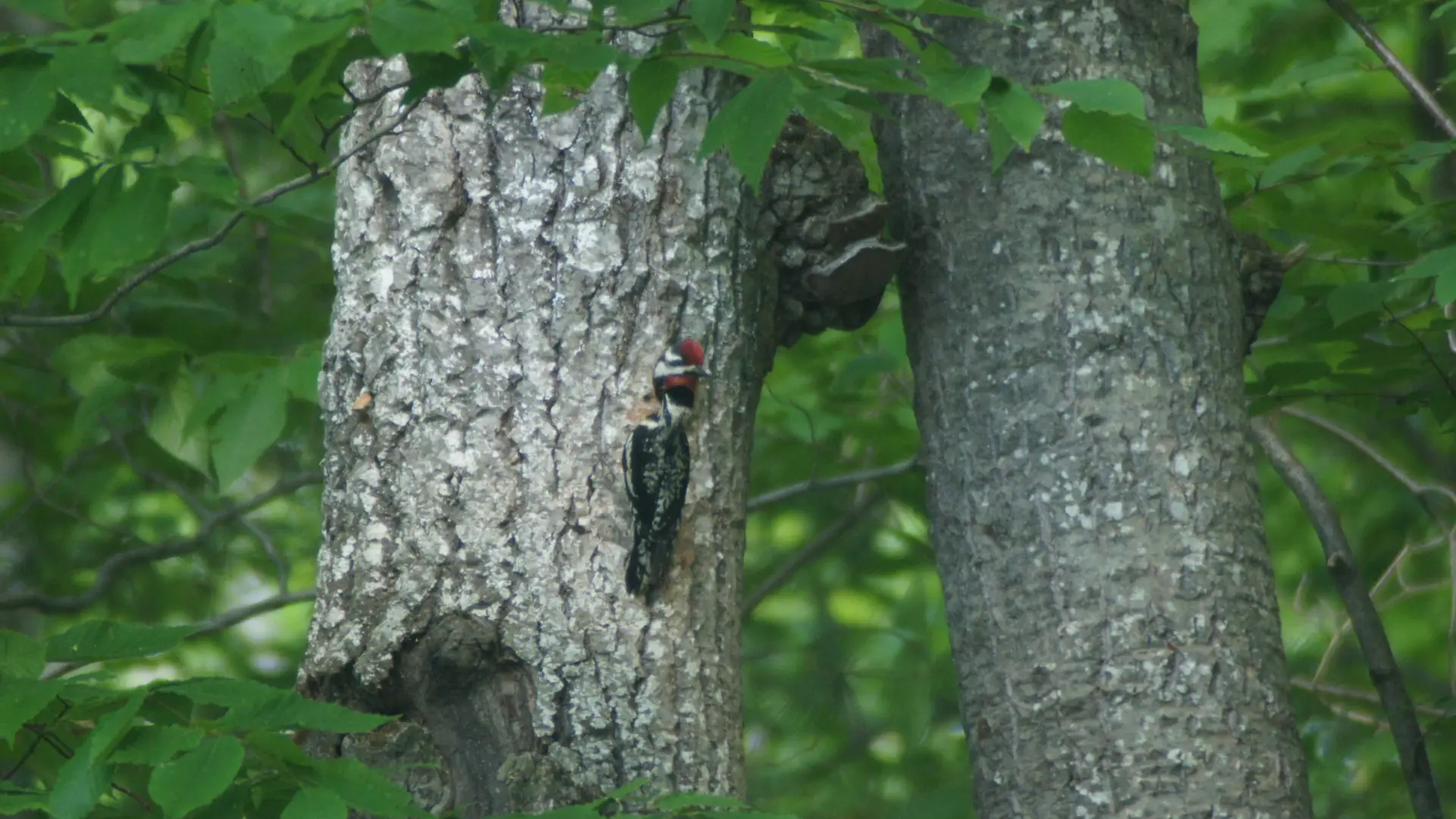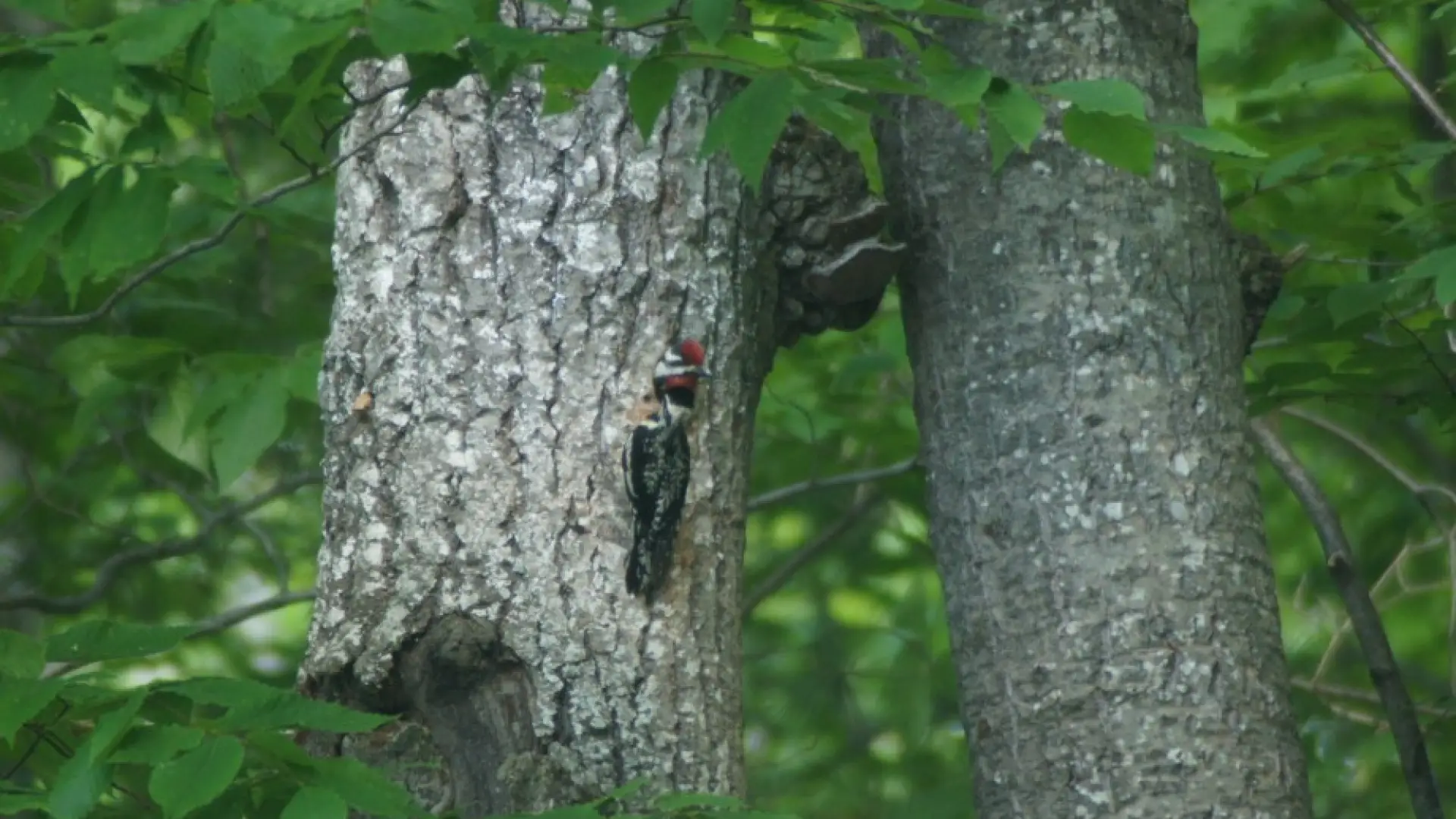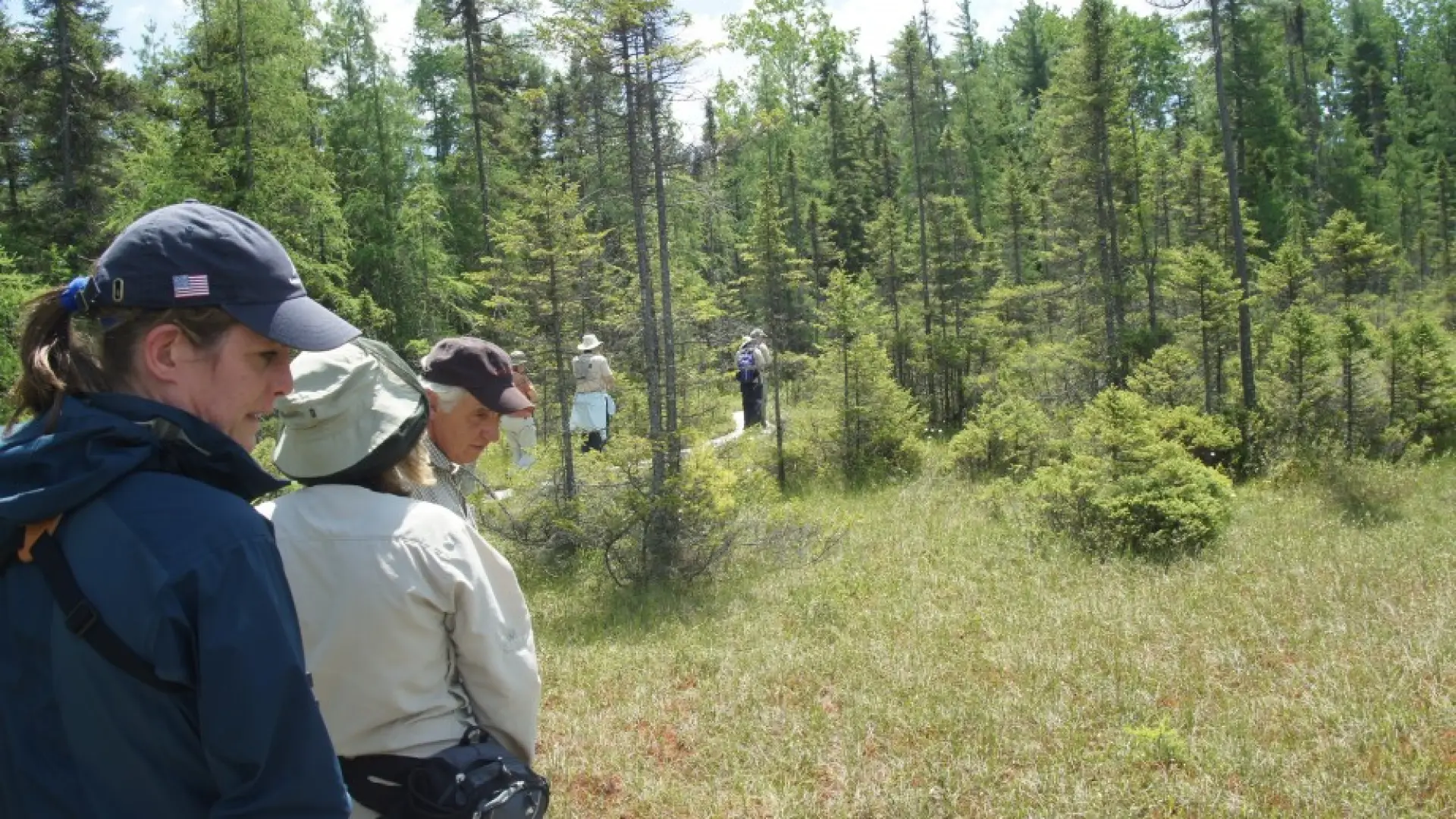
This past weekend, Kendra and I led a group from the Wild Center to Spring Pond Bog – one of my favorite places to go birding in the Adirondacks. Spring Pond Bog is a large boreal complex located north of the village of Tupper Lake. The area is a mixture of coniferous forests, deciduous forests, stream crossings and lakes, centered around the enormous and open bog mat. The area is also a mosaic of private land (with no state land), and gated to boot, meaning permits are necessary to access the varied habitats it contains. We received our permits from the Adirondack Chapter of The Nature Conservancy, who owns several large parcels of land in the complex including the bog itself.

From the Wild Center it is not far to the road which winds you back to the gate, but from the gate it is still a several mile trip on a dirt road to the bog itself. We began birding along a stretch of road surrounded by spruce, fir, and tamarack, where spruce grouse can be found. Spruce grouse are endangered in New York State and are very difficult to find in their boreal forest home. As expected, we did not find any grouse, but we did find a few species of warblers and heard a calling black-backed woodpecker – another denizen of such boreal habitats.
We continued down the road to a stream crossing and poked around a bit. There we found common yellowthroats, swamp sparrows, a chestnut-sided warbler, alder flycatchers, and the drumming of a distant woodpecker which sounded like a black-backed, but we were never able to find it.
Listening for birds as we drove on the meandering, bumpy road, we progressed towards the bog, checking out a few more stream crossings as we went, where we heard the banjo-plucking call of green frogs, and the knocking calls of mink frogs. At one such crossing a female snapping turtle was digging to lay her eggs, and we watched her as well as a male chestnut-sided warbler who was singing and showing himself off on the bare limb of a small tree.
We also passed several lakes and on one of them someone spotted a pair of common loons. After closer inspection, we saw they had a young, fluffy, black chick riding on the back of one of the parents. After a few minutes it slid off into the water and we set up the scope to watch the parents dive and tend the young bird, which also dove itself a few times. I think we could have stood there observing them for hours.
We moved on down the road stopping for least flycatchers and American restarts in a stretch of mostly deciduous forest. Then someone spotted a yellow-bellied sapsucker bringing food to a nest hole and we watched the parents go back and forth for several minutes, as they changed places in the hole, each bringing food to what were probably fairly young chicks. A few of us had nice looks at both red-eyed and blue-headed vireos while we were at it.
As we approached the bog itself, the habitat became more boreal again and I heard the chatter of a few boreal chickadees. We were quickly out of the car – as this is often a target species for folks birding boreal habitats – and we found a small group of four or five boreal chickadees flipping around in the trees. There was also a fuzzy-looking recently fledged ruby-crowned kinglet and a yellow-rumped warbler there as well.
We finally arrived at the Esker Trail which takes hikers up to overlook the vast bog mat. The trail is on Nature Conservancy property, and is an easy walk of about a half mile each way. It also features a short boardwalk onto the bog mat where you can observe bog plants up close. There we saw sheep laurel, bog laurel, leatherleaf, Labrador tea, cotton grass, black spruce, and the carnivorous pitcher plant, just to name a few. There was also a fair-sized garter snake slithering through the plants as we looked. We also heard palm warblers, Lincoln's sparrows, yellow-bellied flycatchers, and watched a pair of broad-winged hawks soar overhead.

We climbed the short hill on the esker and looked out over the spreading bog mat – an impressive site even without all the wildlife we had witnessed. It was a beautiful day even with the numbers of pesky deer flies growing as the sun warmed up the landscape. After fleeting glimpses of the gray jays on the way back and a bounding wood frog on the trail, we drove the long road back to Tupper Lake and the Wild Center. We had found 63 species of birds including 15 species of warblers and some nice boreal birds from the bog – not to mention all the amphibians and reptiles. It was a great day, and one that any naturalist would enjoy.
For more information on the trips of The Wild Center see http://www.wildcenter.org/index.php?sub=58. For more information on Spring Pond Bog and The Nature Conservancy, call 518-576-2082.